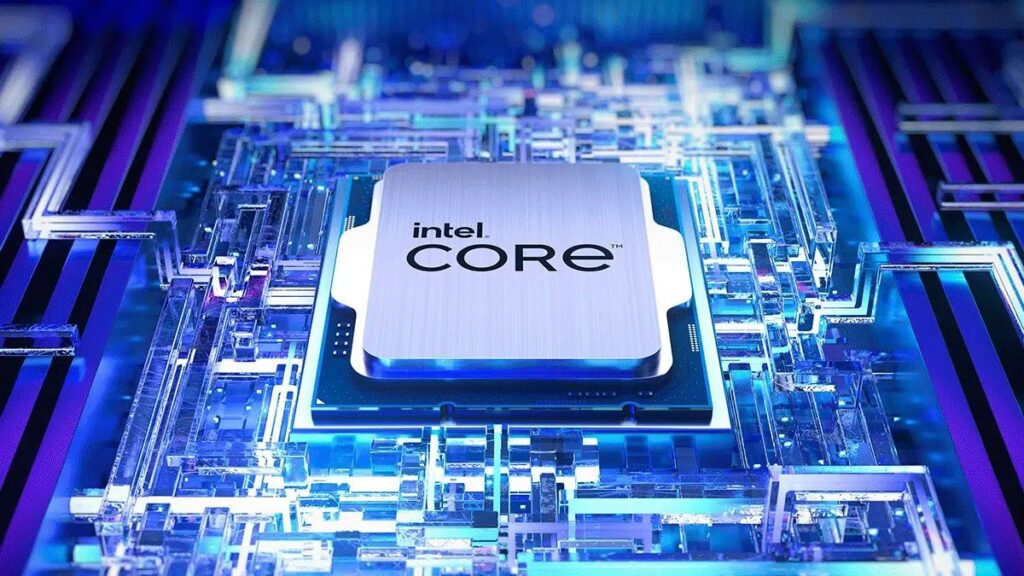
In an era often dominated by flagship devices boasting cutting-edge specifications and premium price tags, a surprising and significant shift is underway in the American technology landscape. The humble budget laptop, once perhaps relegated to the shadows of its more powerful counterparts, is experiencing a remarkable resurgence. This isn’t merely a fleeting trend but a profound re-evaluation by consumers seeking an optimal balance between capability and cost, driven by a complex interplay of evolving needs, economic realities, and technological advancements that make affordable computing more viable than ever before.
This renewed demand signals a maturity in the market, where users are increasingly discerning about where their dollars go, prioritizing essential functionality and tangible value over extravagant features. We’re witnessing a critical juncture where manufacturers must recalibrate their strategies, understanding that ‘budget’ no longer equates to ‘compromise’ in the minds of a significant segment of the population. Instead, it represents smart, accessible technology that serves specific, often critical, purposes without breaking the bank.
Our deep dive into the latest market data reveals distinct patterns and preferences, highlighting key drivers and critical areas where budget laptops are both succeeding and falling short. From the intense demand observed in the gaming sector to the steadfast needs of students and professionals, understanding these nuances is crucial for comprehending the broader narrative of why America is once again embracing budget-friendly computing solutions.

1. **The Dominance and Explosive Growth of Budget Gaming Laptops**One of the most compelling narratives emerging from the current market analysis is the extraordinary ascent of budget gaming laptops. Data from Google Trends paints a vivid picture of this phenomenon, showing an impressive surge in search interest for “budget gaming laptops” that escalated from a normalized value of 60 in July 2024 to a striking 94 by July 2025. This isn’t just a gradual increase; it represents a nearly 60% climb in consumer curiosity and intent over a single year, underscoring a significant shift in how gamers are approaching their hardware purchases.
The trend is further illuminated by distinct seasonal peaks, with search interest hitting 86 in November 2024 and again reaching its zenith at 94 in July 2025. These spikes are no coincidence; they perfectly align with critical consumer buying periods. November is synonymous with holiday shopping, a time when many are looking for gifts or personal upgrades at competitive prices. July, on the other hand, marks the crucial back-to-school window, where students often seek capable yet affordable machines that can pull double duty for both academic work and recreational gaming.
This sustained growth and clear seasonal patterning indicate a robust and predictable demand curve that manufacturers cannot afford to ignore. The “Actionable Insight” derived from this data is unambiguous: there’s a lucrative opportunity to “Capitalize on seasonal demand spikes by launching budget gaming laptops ahead of Q4 holidays and back-to-school periods.” This strategic timing allows brands to position their products effectively, meeting consumers precisely when their intent to purchase is highest, thereby maximizing sales and market penetration within this rapidly expanding segment.
The implications are far-reaching. The rise of budget gaming laptops suggests a democratization of gaming, allowing a broader demographic to access an increasingly popular pastime without the prohibitive costs associated with high-end gaming rigs. This could be driven by the proliferation of cloud gaming services reducing local processing demands, or simply a growing segment of casual gamers who prioritize cost-effectiveness. Regardless of the underlying cause, the data confirms that budget gaming is not just a niche but a powerful force shaping the future of the laptop market.

2. **Stable Demand Meets Critical Quality Concerns in Business/Student Laptops**While the gaming segment experiences dynamic growth, the market for business and student laptops presents a more complex picture: one of stable demand juxtaposed with significant user dissatisfaction. Amazon Trends analysis reveals that search volume for these categories peaked at 967.6 in February 2025, showing a substantial month-over-month increase of 38.47% in July 2024. This indicates a consistent and strong interest from consumers in finding suitable devices for productivity and education.
However, despite this robust search interest, actual sales figures for business/student laptops stabilized at approximately 1,500 units per month. This stabilization, in the face of surging search queries, hints at a potential disconnect: consumers are looking, but perhaps not always converting at the rates seen in other segments. This suggests that while the need for these devices is constant, potential buyers might be hitting roadblocks or encountering issues that prevent them from completing their purchase with confidence.
The “Consumer Sentiment” data provides a critical lens into these roadblocks. While affordability (16.3%) and value (15.3%) are clearly identified as key positive drivers, a host of negative feedback points emerge as significant impediments. Chief among these are concerns regarding “poor screen quality” (11.2%) and “slow performance” (8.9%). These aren’t minor gripes; they strike at the very core of what makes a productivity laptop effective.
An “Actionable Insight” for manufacturers is to “Prioritize screen quality and performance enhancements for business/student laptops.” Addressing these fundamental shortcomings is not just about incremental improvement; it’s about shoring up the foundational elements that define the user experience for students and business professionals. Improving these aspects could unlock the latent sales potential indicated by high search volumes, transforming browsers into buyers by delivering a more reliable and satisfying product that meets their stable, yet exacting, demands.

3. **The Irresistible Pull of Affordability for the Modern Consumer**Across both the gaming and business/student segments, one overarching factor consistently emerges as a powerful motivator for the resurgence of budget laptops: affordability. In an economic climate where every dollar counts, the prospect of acquiring essential technology without a substantial financial outlay holds undeniable appeal. This isn’t about mere cheapness, but rather the strategic allocation of resources, enabling wider access to digital tools that are increasingly non-negotiable in daily life.
Consumer sentiment data explicitly highlights affordability as a “key driver,” with 16.3% of positive feedback for business/student laptops and an even higher 18.3% for gaming models specifically citing this attribute. These figures are not just statistics; they represent a collective consumer voice signaling that price point is a critical decision-making factor. For many, a lower entry barrier means the difference between upgrading an old, failing machine and making do, or accessing a new world of digital possibilities.
This prioritization of affordability is particularly impactful in the budget gaming sector. As games become more graphically intensive, the cost of high-end gaming hardware can be prohibitive. Budget gaming laptops offer a gateway, allowing users to participate in the gaming culture, connect with friends, and enjoy interactive entertainment without needing to invest thousands. This democratic access to gaming experiences fuels its demand, making affordability a powerful enabler.
For students and business users, the calculus is slightly different but equally compelling. A budget laptop allows for essential tasks—word processing, internet research, video conferencing, light data analysis—without diverting significant funds from other critical expenses like tuition, housing, or operational costs. The ability to acquire a functional, reliable device at a lower price point alleviates financial pressure and ensures digital inclusion, making affordable laptops indispensable tools for education and professional endeavors.
Read more about: Beyond the Hype: A Consumer’s Definitive Guide to Small SUVs, Value, and Smart Buying

4. **Unlocking Value: Beyond Just the Price Tag**While affordability is undeniably a primary magnet for budget laptop buyers, the concept of “value” extends beyond simply a low price. It speaks to a deeper consumer calculation: what one receives for the money spent. The data reveals that “value” is a significant positive feedback point, particularly for business/student laptops, garnering 15.3% of positive mentions. This indicates that consumers aren’t just looking for the cheapest option; they are actively seeking products that deliver a meaningful return on their investment through a satisfactory feature set and performance relative to cost.
This quest for value represents a nuanced understanding of technology purchases. It’s about smart buying, identifying where corners can be cut without sacrificing core functionality. For a student, value might mean a laptop that can handle all necessary applications, offers decent battery life for campus portability, and is robust enough to last several academic years, all within a constrained budget. For a small business owner, it could translate to a machine capable of running essential software efficiently, with enough storage, and reliable connectivity, without tying up capital that could be used elsewhere.
Manufacturers who successfully tap into this understanding of value are those that can effectively package essential features without unnecessary frills. This includes aspects like offering “1080p resolution” for a clear display, ensuring sufficient “512GB SSD for multitasking” to prevent performance bottlenecks, and prioritizing “8–12 hours for portability” in battery life—all frequently cited product recommendations. These are the functional cornerstones that define a truly valuable budget laptop, allowing users to accomplish their tasks effectively without feeling shortchanged by the lower price point.
Ultimately, the consistent positive feedback on “value” suggests that consumers are becoming savvier. They are performing their due diligence, reading reviews, and comparing specifications to ensure that their affordable purchase is not merely cheap, but genuinely useful and capable. This discerning approach pushes manufacturers to optimize their designs, ensuring that every component contributes meaningfully to the overall user experience, thereby reinforcing the segment’s growth as a credible alternative to premium-priced machines.
Read more about: Seriously Inspiring! These 15 Icons Faced Massive Rejection (Like 50+ Times!) Before Dominating Their Fields – Get Ready to Be Motivated!

5. **The Critical Flaw: Poor Screen Quality in Business/Student Models**Amidst the positive drivers of affordability and value, a significant Achilles’ heel for business and student laptops emerges in the form of “poor screen quality.” This issue is not merely an aesthetic concern; it directly impacts productivity, user comfort, and overall satisfaction. Consumer sentiment data reveals that 11.2% of negative feedback for business/student laptops specifically points to this critical flaw, making it one of the most pressing challenges manufacturers face in this segment.
For students, a low-quality screen can mean eye strain during long study sessions, inaccurate color representation for design-related tasks, or simply a diminished experience when consuming educational content. In a business context, it can hinder presentations, make detailed data analysis more challenging, or reflect poorly on professional interactions during video calls. The display is the primary interface through which users interact with their device, and a subpar screen can undermine all other positive aspects of a laptop, regardless of its price.
This negative feedback is particularly potent because, unlike a slow processor which might be tolerated in a budget device, a poor screen is a constant, unavoidable irritant. It can make text appear blurry, colors washed out, and viewing angles restricted, forcing users into awkward positions just to see the display clearly. Such fundamental issues contradict the very notion of a ‘valuable’ device, even an affordable one, making the user experience far less than ideal.
The “Actionable Insight” to “Prioritize screen quality… for business/student laptops” is thus not just a recommendation but a necessity for market success. This doesn’t necessarily mean incorporating the most expensive panels, but rather ensuring a baseline level of clarity, brightness, and color accuracy, ideally meeting the “1080p resolution” preference highlighted in product recommendations. Addressing this pain point directly can significantly enhance user satisfaction, turning negative perceptions into positive endorsements and strengthening the appeal of budget devices for crucial educational and professional applications.

6. **Audio Woes: Sound Quality Issues Plaguing Budget Gaming Rigs**While budget gaming laptops are experiencing a surge in demand, they are not without their own distinct set of challenges, prominent among which are “sound quality issues.” A substantial 17.4% of negative feedback for gaming laptops specifically highlights this problem, making it the most frequently cited complaint for this category. In the immersive world of gaming, sound is not merely an accessory; it is an integral component of the experience, crucial for situational awareness, atmosphere, and overall enjoyment.
Poor sound quality can manifest as tinny audio, a lack of bass, distorted effects, or insufficient volume, all of which significantly detract from gameplay. Imagine playing a graphically rich game only to have the impactful soundtrack or crucial in-game audio cues muddled by substandard speakers. This directly undermines the immersive experience that is a core appeal of gaming, even for casual users who opt for budget-friendly hardware. The disconnect between visual performance and auditory feedback creates a jarring and ultimately dissatisfying experience.
This issue is particularly ironic given that many budget gaming laptops successfully deliver on the visual front with “1080p resolution” displays. However, if the audio fails to match this visual fidelity, the overall perception of the device’s capabilities is diminished. Gamers, even those on a budget, expect a cohesive experience, and sound plays a critical role in delivering that.
The “Actionable Insight” to “improve sound… for gaming models” is therefore a direct call for manufacturers to bridge this gap. This doesn’t necessarily demand studio-grade audio components but rather a focused effort to integrate speakers and audio processing that can deliver clear, rich, and sufficiently loud sound. Addressing this pain point offers a clear competitive advantage, allowing budget gaming laptops to deliver a more holistic and satisfying experience, thereby capitalizing more effectively on their strong market demand and further cementing their place in the gaming community. Providing a balanced sensory experience is key to converting interest into sustained loyalty within this dynamic market segment.

7. **The Imperative for Balanced Performance in Budget Devices**The resurgence of budget laptops isn’t just about cutting costs; it’s about delivering adequate performance for the money. Consumers are increasingly savvy, understanding that even an affordable machine needs to handle everyday tasks without frustrating slowdowns. This is particularly true for students and business professionals, where efficiency directly impacts productivity and learning outcomes.
A critical aspect of achieving this balanced performance lies in the core processing unit. Product recommendations consistently highlight the need for “Intel Core i3/i5 or AMD Ryzen 3/5 CPUs.” These processors represent the sweet spot for budget devices, offering sufficient power for word processing, web browsing, video conferencing, and even some light multitasking, without driving up costs excessively. They provide the computational backbone necessary for a smooth user experience, ensuring that basic applications run without a hitch.
Beyond the CPU, sufficient RAM plays a pivotal role in overall system responsiveness. Models like the ASUS VivoBook 15, priced at $450, come equipped with “8GB RAM,” which is a crucial specification for effective multitasking. This amount of memory allows users to open multiple browser tabs, switch between applications, and manage larger documents without the system grinding to a halt, directly addressing the “slow performance” feedback that has plagued budget business and student laptops.
Read more about: Top 7 Cars Under $40,000: Value, Performance, and Advanced Safety Features for Savvy Buyers

8. **The Non-Negotiable Display: 1080p Resolution as the New Standard**In an age where visual content dominates, a high-quality display has moved from a luxury to an essential feature, even in the budget laptop market. The consistent negative feedback concerning “poor screen quality” in business and student laptops (11.2% of complaints) underscores just how critical this component is for user satisfaction. A dim, low-resolution, or color-inaccurate screen can quickly diminish the value of an otherwise capable device.
Product recommendations explicitly call for “1080p resolution” across “15.6”–16″ screens.” This Full HD standard ensures crisp text, clear images, and a more immersive experience for everything from online lectures to spreadsheet analysis. For students, it means less eye strain during extended study sessions, and for business users, it translates to sharper presentations and a more professional interface for video calls.
Manufacturers must understand that compromising on display quality is a false economy. While it might save a few dollars in production, it directly impacts the user’s primary interaction point with the laptop, leading to dissatisfaction and hindering adoption. Investing in a decent 1080p panel, even at the budget end, is a strategic move that can significantly enhance the perceived value and utility of these devices, transforming a critical flaw into a compelling selling point.

9. **Powering On the Go: Demands for Extended Battery Life**Portability is a cornerstone of modern laptop design, and central to true portability is extended battery life. Users expect their devices to last through classes, meetings, or even casual work sessions without constantly hunting for a power outlet. This requirement is particularly acute for budget laptops, which often serve as primary devices for students and mobile professionals who may not always have access to charging points.
Product recommendations consistently highlight a demand for “8–12 hours for portability.” This range represents a sweet spot, offering enough endurance for a full day’s work or study without anxiety. Achieving this level of battery performance in budget models requires careful optimization of components and power management systems, rather than simply slapping in a larger, more expensive battery.
The “Actionable Insight” for suppliers to “prioritize lightweight designs for portability” implicitly links to battery efficiency. A lighter device is inherently more portable, and if it can achieve substantial battery life, its utility skyrockets. Manufacturers who can deliver on this promise—a truly portable device that lasts—will find a significant competitive edge in the budget market, catering to a fundamental user need that transcends price point.
Read more about: Engine of Regret: 14 Car Models That Left Owners Begging for a Trade-In – A Data-Driven Warning

10. **Beyond Specs: The Strategic Advantage of Lightweight Designs**While performance specifications, display quality, storage speed, and battery life are crucial, the physical form factor of a budget laptop also plays a significant role in its appeal and utility. The “Actionable Insight” for suppliers to “prioritize lightweight designs for portability” is a clear indication that consumer preferences extend beyond raw numbers to encompass the overall user experience and convenience.
A lightweight design enhances portability, making the laptop easier to carry around campus, commute with, or simply move between rooms. This isn’t just about reducing ounces; it’s about minimizing the physical burden of carrying a device daily. For students, a light laptop reduces backpack strain, while for business users, it makes travel less cumbersome. This contributes significantly to the “value” proposition, as it directly improves the practical usability of the device.
Furthermore, a well-designed, lightweight chassis often suggests a more modern aesthetic and improved build quality, even in the budget segment. While the context mentions “structural durability” as an area for improvement in gaming models, a focus on sensible, robust lightweight construction across all budget categories can elevate the overall perception and longevity of these devices. This strategic focus ensures that budget laptops are not just functional but also pleasant and convenient to use.
Read more about: Why Every Man Needs a Swiss Army Knife: A Comprehensive Guide to this Essential Tool for Modern Preparedness

11. **Divergent Paths: Channel Insights from Google Trends vs. Amazon**Understanding the nuances of consumer behavior across different digital channels is paramount for market success in the budget laptop segment. The “Channel Comparison” provided in the data reveals distinct patterns between what consumers *search for* globally via Google Trends and what they *actively engage with* and *purchase* on e-commerce platforms like Amazon. These insights offer a crucial roadmap for manufacturers.
In stark contrast, Amazon Trends data for “Business/Student Laptops” shows “Search volume peaked at 967.6 in February 2025,” alongside “sales stabilized at ~1,500 units/month.” For “Gaming Laptops” on Amazon, search volume also surged, but “sales peaking at 612 units in April 2025 before declining.” This implies that while search interest exists across both categories on Amazon, the conversion to sales, especially for business/student models, faces significant friction, likely due to the “critical quality concerns” identified earlier. This channel serves as a point of purchase and reveals critical gaps in product delivery.
12. **The Evolving Landscape of Business and Student Laptops**While the budget gaming segment is poised for explosive growth, the future of business and student laptops in the affordable category presents a different, yet equally vital, outlook. The “Conclusions and Predictive Outlook” section notes that “Business/student segments will stabilize with incremental upgrades in display and battery life.” This suggests a market driven by refinement and user experience improvements rather than radical shifts.
The stability of demand for these productivity-focused devices, as seen in Amazon’s search volumes, indicates an enduring need for functional, affordable tools for education and work. However, the identified “critical quality concerns” regarding “poor screen quality” and “slow performance” highlight areas ripe for targeted improvements. Future success in this segment will hinge on manufacturers delivering consistent, reliable performance and addressing these fundamental user frustrations.
“Incremental upgrades in display and battery life” are the key drivers for maintaining relevance and converting consistent search interest into sustained sales. As manufacturers heed the “Actionable Insight” to “Prioritize screen quality and performance enhancements,” these budget laptops will gradually shed their reputation for compromise. This steady evolution, coupled with a focus on core utility and improved user experience, will ensure that affordable business and student laptops remain indispensable tools in the digital lives of millions.
Read more about: Google’s Digital Delights: 12 Essential Innovations That Shaped Our Connected World
An enduring truth in the technology market, especially within the dynamic landscape of budget laptops, is that true innovation often arises from necessity. The journey of these devices, from humble utility to surprisingly capable workhorses, reflects a profound shift in consumer values. It’s a testament to the idea that smart design, thoughtful engineering, and a genuine commitment to addressing user needs can democratize access to powerful tools, proving that cutting-edge experiences don’t always demand a premium price tag. As manufacturers continue to listen, adapt, and refine, the future of budget computing looks not just affordable, but remarkably bright.




